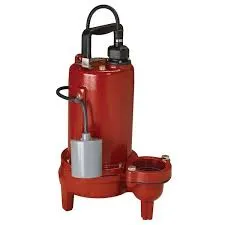Gujarati
- Afrikaans
- Albanian
- Amharic
- Arabic
- Armenian
- Azerbaijani
- Basque
- Belarusian
- Bengali
- Bosnian
- Bulgarian
- Catalan
- Cebuano
- Corsican
- Croatian
- Czech
- Danish
- Dutch
- English
- Esperanto
- Estonian
- Finnish
- French
- Frisian
- Galician
- Georgian
- German
- Greek
- Gujarati
- Haitian Creole
- hausa
- hawaiian
- Hebrew
- Hindi
- Miao
- Hungarian
- Icelandic
- igbo
- Indonesian
- irish
- Italian
- Japanese
- Javanese
- Kannada
- kazakh
- Khmer
- Rwandese
- Korean
- Kurdish
- Kyrgyz
- Lao
- Latin
- Latvian
- Lithuanian
- Luxembourgish
- Macedonian
- Malgashi
- Malay
- Malayalam
- Maltese
- Maori
- Marathi
- Mongolian
- Myanmar
- Nepali
- Norwegian
- Norwegian
- Occitan
- Pashto
- Persian
- Polish
- Portuguese
- Punjabi
- Romanian
- Russian
- Samoan
- Scottish Gaelic
- Serbian
- Sesotho
- Shona
- Sindhi
- Sinhala
- Slovak
- Slovenian
- Somali
- Spanish
- Sundanese
- Swahili
- Swedish
- Tagalog
- Tajik
- Tamil
- Tatar
- Telugu
- Thai
- Turkish
- Turkmen
- Ukrainian
- Urdu
- Uighur
- Uzbek
- Vietnamese
- Welsh
- Bantu
- Yiddish
- Yoruba
- Zulu
Telephone: +86 13120555503
Email: frank@cypump.com
ઓગસ્ટ . 12, 2024 12:02 Back to list
High-Performance Submersible Water Pumps Designed for Industrial Applications and Efficiency Optimization
Industrial Submersible Water Pumps Essential Tools for Efficient Water Management
In the realms of industrial applications, the management of water resources is critical. From construction sites to wastewater treatment plants, the ability to move and manage water efficiently can significantly impact project timelines and operational effectiveness. One of the essential tools in this domain is the industrial submersible water pump—a device specifically designed to work underwater, providing robust solutions for various water-related challenges.
Understanding Submersible Water Pumps
Submersible water pumps are electric pumps that are submerged underwater to pump out water from a particular site. Unlike standard pumps, which are typically positioned above the water surface, submersible pumps have their motor encased in a waterproof shell, allowing them to operate submerged. This unique design reduces the risk of air lock and enables them to deliver high efficiency for various applications.
Key Applications
Industrial submersible water pumps are utilized in numerous sectors. In construction, they manage groundwater in excavations and dewater foundations, ensuring that sites remain dry and safe for workers. In mining, these pumps are crucial for maintaining operational efficiency by removing excess water from mines. Furthermore, they play a significant role in agriculture, helping with irrigation and water supply management.
In wastewater treatment, these pumps are indispensable for transporting effluents to treatment facilities. They handle both urban and industrial wastewater while ensuring compliance with environmental regulations. Additionally, submersible pumps are employed in flood control, providing rapid water removal to protect properties and infrastructure during heavy rainfall or flooding events.
Advantages of Submersible Pumps
industrial submersible water pump

Several advantages make industrial submersible water pumps a preferred choice in many applications. Firstly, their design allows for the efficient movement of water from deep sources, minimizing the need for complex piping systems. This can lead to significant cost savings in installation and maintenance.
Secondly, submersible pumps are versatile and can handle various water types, from clean to dirty and corrosive fluids. This flexibility is essential in industrial settings where the nature of the water can vary. Additionally, they operate quietly and reduce surface noise, an essential factor in urban and populated areas where sound regulations are in place.
Reliability is another critical advantage. Submersible pumps are built to withstand harsh environments and can operate continuously under demanding conditions. With proper maintenance, they can offer a long service life, reducing the frequency of replacements and the associated costs.
Challenges and Considerations
While the benefits are substantial, there are challenges that users must consider. Proper installation is crucial; a poorly installed pump can lead to operational failures. Moreover, regular maintenance is vital to ensure that the pump operates efficiently. This includes checking seals, bearings, and other components regularly to prevent downtime.
Furthermore, selecting the right submersible pump requires understanding a variety of specifications such as flow rate, head pressure, and power source. Therefore, engaging with industry experts or conducting thorough research is advisable for organizations looking to invest in these pumps.
Conclusion
In summary, industrial submersible water pumps play an invaluable role in effective water management across various sectors. Their efficiency, reliability, and versatility make them essential tools in construction, mining, agriculture, and wastewater management. While challenges exist in their installation and maintenance, the advantages far outweigh these aspects, making them indispensable in today's industrial landscape. By leveraging the capabilities of submersible water pumps, industries can optimize their operations, conserve resources, and address water management challenges effectively.
-
Horizontal Split Case Pump with GPT-4 Turbo | High Efficiency
NewsAug.01,2025
-
ISG Series Pipeline Pump - Chi Yuan Pumps | High Efficiency, Durable Design
NewsAug.01,2025
-
Advanced Flue Gas Desulfurization Pump with GPT-4 Turbo | Durable & Efficient
NewsJul.31,2025
-
ISG Series Vertical Pipeline Pump - Chi Yuan Pumps | Advanced Hydraulic Design&Durable Construction
NewsJul.31,2025
-
ISG Series Vertical Pipeline Pump - Chi Yuan Pumps | Energy Efficient & Low Noise
NewsJul.31,2025
-
pipeline pump - Chi Yuan Pumps Co., LTD.|High Efficiency&Low Noise
NewsJul.31,2025










